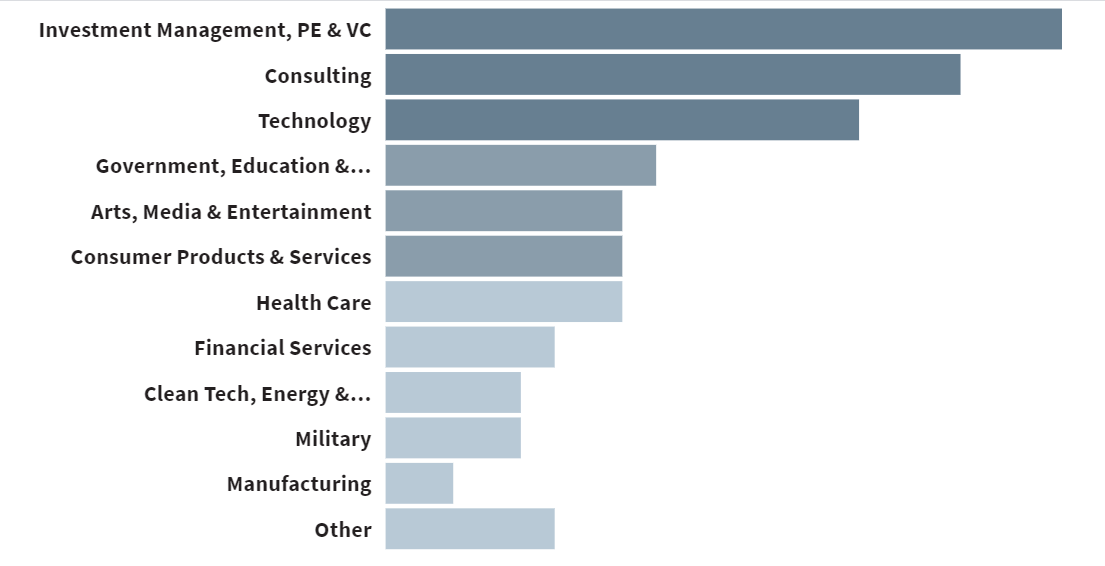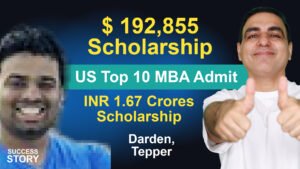If you are applying to the top-tier MBA colleges in the United States, then Stanford will definitely be on top of your list. But, as you might have guessed, cracking the prestigious MBA program at Stanford is not an easy task!
Stanford GSB operates under the motto of “Change Lives, Change Organizations, Change the World.” So, it’s not a mere question of GMAT scores and enough job experience; rather, one needs to cultivate the top-tier MBA personality and mindset.
If you have been following the various interviews and webinars held in the past by the Stanford GSB admissions committee, you will know that some of the most important aspects they look for within their applicants are the ability to contribute, intellectual strength, and leadership quality. Some have also been known to say that the Stanford MBA is perhaps the most selective when it comes to the admission process!
In this article you will find an in-depth discussion regarding how you can cultivate a personality that suits the requirements of Stanford, and furthermore understand important details regarding how to make it to one of the most respectable MBA programs in the world!
How to get into Stanford GSB?
To answer this question we need to first cover the basics. Stanford, like any other top B-school has a specific set of requirements. These include your GMAT score, graduation GPA, work experience, and extracurricular activities.
But, when it comes to top-tier schools, each of these requirements has a specific purpose. Here’s a comprehensive look at how these factors operate –
GMAT and GPA
If you are aiming for the top B-schools it is safe to say that you need a GMAT score of 740 – 750 to really stand a chance. At the same time, the average GMAT requirement for Stanford can shift from year to year. The latest average is 733, whereas it was not the same last year!
So, if you are someone with a GMAT score between 720 – 730, you still have a chance at getting through Stanford.
Let’s have a look at the average GMAT scores of the top B-schools in the world; this will give you an idea regarding where you stand –
| B-School | Average GMAT Score 2018 | Average GMAT Score 2017 |
| University of Chicago – Booth School of Business | 730 | 726 |
| Kellogg School of Management | 732 | 728 |
| Harvard Business School | 730 | 729 |
| University of Pennsylvania – Wharton School | 732 | 730 |
| Stanford University – Graduate School of Business | 737 | 737 |
| UCLA – UCLA Anderson School of Management | 715 | 715 |
| University of Virginia – Darden School of Business | 713 | 712 |
| Columbia Business School | 725 | 718 |
As you can see, the average GMAT score of these schools is something dynamic. To crack the Stanford MBA program your ideal GMAT score should be 740. But, if you have a lower score and at the same time a great candidate profile with top-notch work experience and apt extra-curriculars, then you have a good chance at making it!
But, if your GMAT score is lower than 720, it’s going to be tough for you to crack the top-tier MBA programs even with a great profile. Watch this short video for further tips on how to apply for the top MBA programs with a low GMAT score:
What Should You Do After a Low GMAT Score? MBA with 500 GMAT? Jatin Bhandari, Global MBA Consultant
You can apply the exact same logic to your GPA as well. While the best candidate will sport a GPA of 3.5+, you can always apply with a lower GPA as long as the rest of your application is rock solid. The university from where you completed your graduation will also be relevant in this case. So, an average GPA from a top-tier college will still keep you in the game, and a good GPA from a top-tier college can even work as a shield against your low GMAT score!
If you are still in college, place a lot of importance on your GPA; especially since you can always retake the GMAT and try to increase your score but your graduation GPA will never change!
Work experience
The average work experience required to qualify for the Stanford GSB MBA program, as mentioned on their website, is 4.7 years. Once again, this figure is not to be taken as a monolithic statement. The industry you belong to, the company you work in, the position you hold, are some of the factors that will be heavily considered by the admission committee at Stanford.
Have a look at top industries from where the Stanford MBA program is fuelled –

Source – Stanford GSB website
So, if you belong to one of the top tech or consulting firms and you have around 3.5 years of work experience, you are still a good candidate for the Stanford MBA program. Add a good GMAT score and GPA and you are looking at a sure-shot entry!
On the other hand, if you do not belong to a top company but have achieved significant promotions and handle leadership positions, you also have a strong application as well. Stanford is known for hiring applicants with a penchant for leadership!
Extra-curricular activities
Your extra-curricular activities help define your character and there are always a specific set of activities that will make you a better candidate in the eyes of the admissions committee. Once again, any activity that portrays your leadership skills will create a strong profile for Stanford! Team based sports, representing your college, etc. are some of the activities that you should definitely mention in your application.
Here’s a more detailed look at how top-tier B-schools analyze your extra-curricular activities:
Now, with the combination of these three factors, you will find yourself in one of these tiers; and the expected result is also mentioned:
| Tier | GPA | GMAT | Work Exp | Extra Curriculars | Outcome |
| Tier 1 | 3.7+ | 750+ | 3-4 years at a Fortune 500 company | Yes | Admitted |
| Tier 2 | 3-3.7 | 730-750 | 4+ years at a regular company | Yes | Possible |
| Tier 3 | 3-3.7 | 750+ | 2+ years at a regular company | No | Possible but with significant work achievement |
| Tier 4 | 3.7+ | Below 720 | 4+ years at a regular company | No | Advised to increase GMAT score |
| Tier 5 | 3.7+ | Below 720 | 3-4 years at Fortune 500 company | Yes | Possible, but better chances with increased GMAT |
How to create the Stanford Mindset?
As stated initially, the scores and work experience are not the only factors that affect your application. To have a shot at the top MBA programs you need to take a step beyond and build a persona that is championed by these institutions.
This process begins with asking yourself why Stanford? And you should definitely expect this question in your application or in the personal interview round. You need to know what your goals are, and how you plan to reach them. Thus, you should be able to draw a connection between your professional goals and the particular aspects of the Stanford MBA program that will help you reach them!
Networking is another important aspect. The Stanford alumni features people from all over the world, and you should be able to find someone who will be able to provide you with some insider tips. You can also attend the various webinars held by Stanford before the applications begin, and these may allow you to directly connect with the admissions committee members. And if you manage it, definitely go for a class visit as it will help bridge a cultural gap!
The MBA program at Stanford has a diverse class, both in terms of nationality and profession. Yet, it looks for applicants with a similar mindset and attitude. So, as an applicant from India trying to crack an overseas MBA program, developing this particular mindset is absolutely important! Not only will it help you create the application, but you will also fit right into the program and sail through with ease.
Follow our blog and visit our YouTube channel for more such discussions on top-tier MBA programs!





